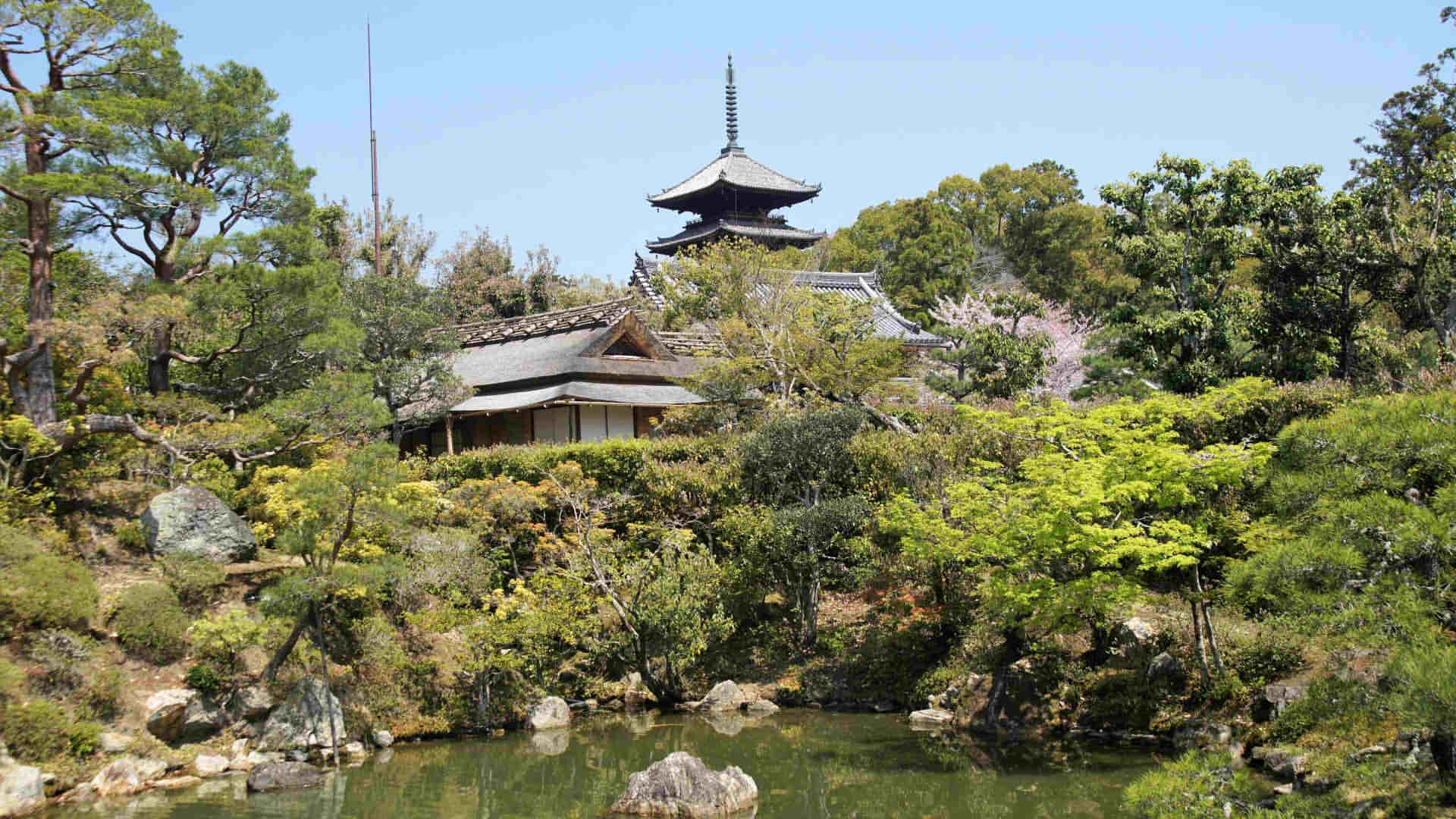
Ninnaji Temple (仁和寺) is a Buddhist temple located in Kyoto, Japan, and is designated as a UNESCO World Heritage Site as part of the “Historic Monuments of Ancient Kyoto.” The temple was founded in 888 by Emperor Uda and is associated with the Omuro School of the Shingon sect of Buddhism.
The temple complex features several buildings, including the Golden Hall (Kondo), which houses the principal image of Amida Buddha and is designated as a National Treasure, a five-story pagoda (designated as an Important Cultural Property), and the Kannon-do Hall, dedicated to the Thousand-Armed Kannon Bodhisattva. One of the highlights of Ninnaji is its beautiful gardens, including a large pond garden with a bridge and a tea house, and a cherry blossom garden that is particularly stunning in the spring.
Ninnaji is especially renowned for its unique variety of cherry trees called Omurozakura, which are characterized by their short stature and late blooming period, usually in mid-April. This makes Ninnaji one of the best spots in Kyoto for enjoying cherry blossoms later in the season. The Omurozakura trees are over 500 years old and are said to have been planted by Emperor Go-Mizunoo.
In addition to its natural beauty, Ninnaji is also home to several other important cultural assets, including the Niomon Gate, designated as an Important Cultural Property, and the Chumon Gate, also known as the Chokushimon, which once served as a gate to welcome imperial messengers. The temple’s Reihokan Museum houses a collection of Buddhist statues and other valuable artwork.
Getting there
By Train
- About 3 minutes walk from Omuro Ninnaji Station on the Keifuku Electric Railroad (Randen) Kitano Line
By Bus
From Kyoto Station:
- About 30 minutes by JR Bus, 230 yen
- About 30 minutes by City Bus No. 26
Details
| Hours | March to November / 9:00 AM – 5:00 PM December to February / 9:00 AM – 4:30 PM |
| Admission | Adults: 800 yen |
| Phone | +81 75-461-1155 |
| Address | 33 Omuroouchi, Ukyo Ward, Kyoto, 616-8092 |
